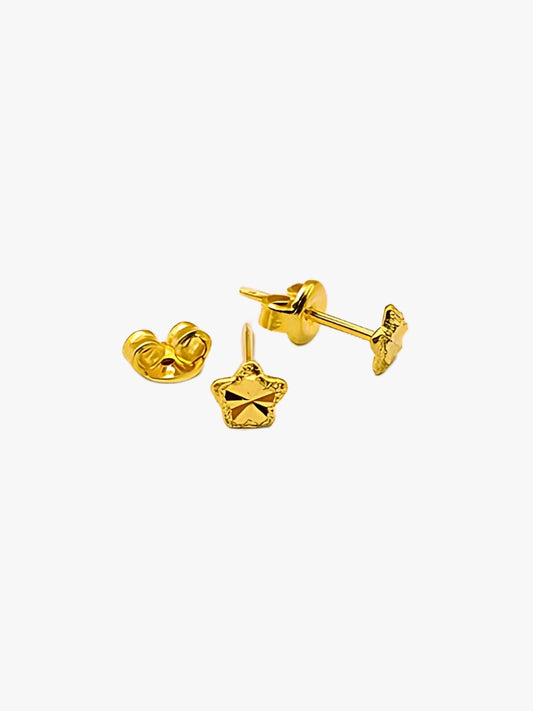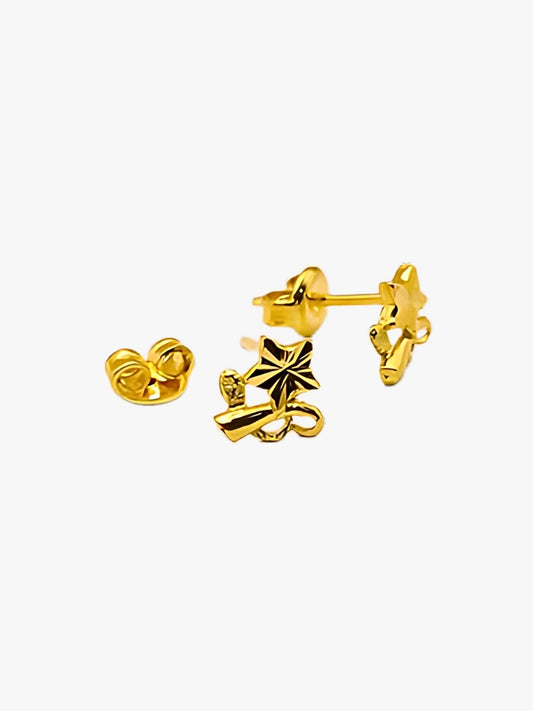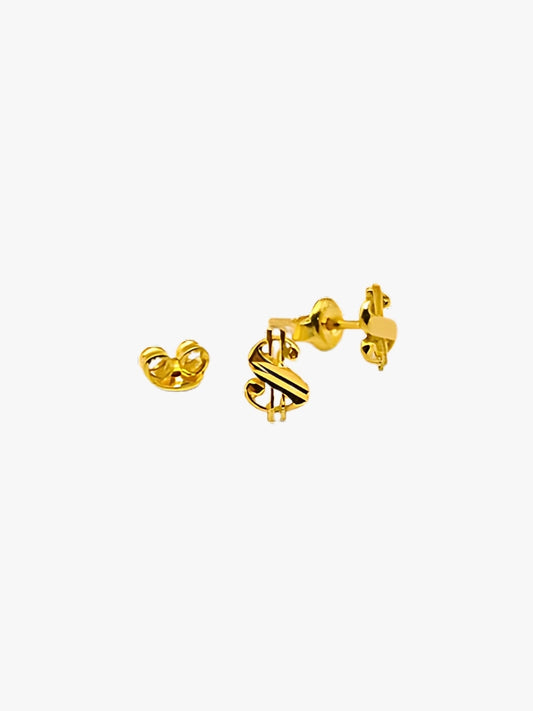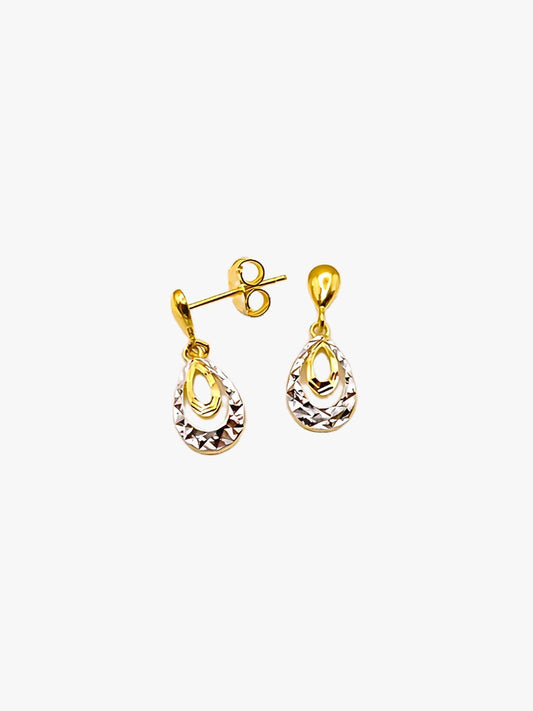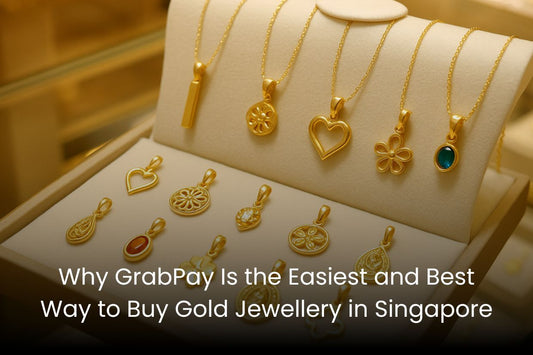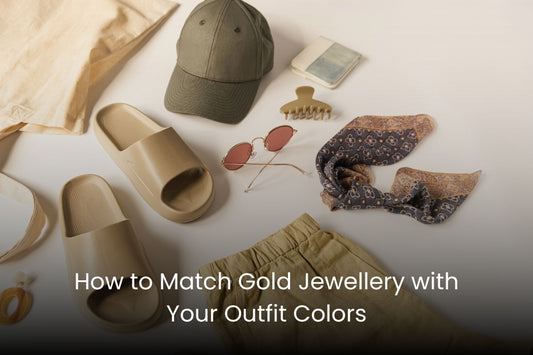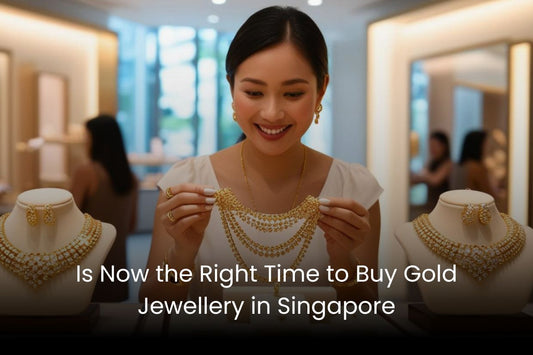Being such a valuable investment and a purchase that brings joy to anyone, it is important we understand how to identify what is real gold and what is not. Gold is the GOAT of all precious metals. However, this does not spare real gold from being counterfeited. As your trustee jeweller, let GM Collections share all there is to know about identifying authentic gold, allowing you to make an informed decision when you choose and wear your gold.
In a world where many things may not be what they seem to be, you would surely want your gold to be real. Gold, as both a beloved accessory and an investment, should be mindfully shopped due to its high value. By knowing how to recognise true gold, you can actively minimise the risk of spending your money on the wrong end of the deal by avoiding scammers and counterfeited gold products that seem to be increasing within the gold market day by day.
Understanding Gold Purity.
What is Gold Purity?
If you have no idea what gold purity is do not worry because it is exactly what it sounds like. Gold purity means how pure your gold is, more precisely, how much of pure or real gold is contained in a gold product.
This brings the question, does that mean gold products are not all gold? When making products like gold jewellery, gold is often alloyed with other metals to increase its malleability and strength. Those other metals play a big role in the craftsmanship of gold products, allowing creative designs to be made according to the requirements.
Measuring Gold Purity.

Gold purity is measured mainly by karats and fineness. Karats are a measurement of gold purity where the amount of gold is taken in relation to 24 parts of gold. Therefore, if a necklace is 14/24 gold, it is 14 karats. The highest of karats is 24 karats, which means it is pure gold. You can find real gold products ranging from as low as 9k, 10k up to 24 karats, giving you different purity options.
Fineness is also a gold purity measurement which relates the product to a thousand gold parts. Hallmarks on real gold jewellery, such as 916, indicate that 916 /1000 are gold; therefore, 91.6% gold if taken in percentages. For example, an 18-karat bracelet would be 750 fineness or 75% gold.
Here are some different gold purities and their differences you may notice,
- 24k - This means 24 out of 24 parts are true gold or that it is at 99.99% in gold purity. The significance of 24k is that it is the purest form of gold you will find out there. This results in the bright yellow glow that is unique to real gold. However, because it is very tender by nature, it is mostly used to make products like gold bars and coins for investments.
- 22k - This means 22/24 are gold or 916 gold. Still remaining with the warm twinkle, it is popularly used for gift-giving as it is known to be a valuable and prosperous symbol. Jewellers often use 22k for jewellery making, which gives the product good stability and a stunning look.
- 18k- With 75% real gold and 25% other metal alloys, 18k gold makes a great vessel for mesmerizing jewellery making. The gold colour of 18k is what most people would imagine when they hear the word gold metal. For gold lovers who does not want to go all the way yet, this is a great start.
- 14k- This contains 14 gold out of 24 parts, translating to 58.3% pure gold. Because of the low content of the precious metal, it is more affordable compared to 18k or 22k. However, the signature golden hue might not be as strong as it would be in a 22k.
Visual Inspection Techniques.

Examining Gold Colour.
In this part, we will explore how to identify real gold from visual signs. First, the signature gold colour. As you now know, gold jewellery with higher gold purity has more of this concentrated yellow than lower karats. Research and get familiar with what each level of gold purity looks like on real gold. This way, you will be able to spot if something is off, whether it is a 22k gold pendant with a dulled yellow shine or a 10-karat with extremely yellow tan.
Checking for Hallmarks and Stamps.
Hallmarks and stamps are a great authentication of gold purity and high quality. Official bodies and agencies that set standards and test gold for being up to the required market quality have the authority to imprint hallmarking and stamps on real gold. In Singapore, real gold products will have the SAO hallmark given by the Singapore Assay Office. Some craftsmen also stamp their logos to prove manufacturing and designing origins. You can check for these hallmarks in places like near the clasps of necklaces and bracelets, the inside of the band if it is a ring or the underside of earrings.
Inspecting for tarnish or discolouration.
Real gold has no tendency to tarnish or cause any sort of discolouration when you buy it because gold is not likely to react to other environmental agents rusting, and other kinds of damages are very rare unless poorly taken care of. Counterfeited gold, on the other hand, can have spots easily with use and can leave green or blue marks on your skin when worn, unlike real gold, which does not leave discolouration on the skin, which comes with real gold allergy-friendly.
Practical Testing for Identify Real Gold.
Gold is truly more than what meets the eye, which is why there are some practical tests you can conduct to determine if something is the real deal.
Magnet test.
Authentic gold is not a magnetic metal by nature. You can use that knowledge to test if it is real gold. Place your gold on a flat surface, slowly bring a magnet closer to it and observe. If the gold is attracted to the magnet, there is a chance it might be fake. However, gold-plated jewellery can pass this test as well.
Water test.
Genuine gold is high density. Simply take a glass full of water and drop your gold into it. If it sinks to the bottom, your gold is real and of high quality. If it floats in any way, then you might have gotten your hands on some fake gold.
Make-up test.
This one might take you by surprise. Real gold can leave a black mark on a foundation. To test this, put some liquid foundation on your hand or wrist, blend it and dab it with some powder. After it has completely dried, you can rub your gold on the spot to see if it leaves any marks. Genuine gold will leave a black streak on makeup.
However, the above are practical tests you can do at home and may lack the ability to give you full disclosure on the realness or fakeness of your gold. If you are opting for at-home tests, we recommend doing more than one to confirm your beliefs. You can also order gold testing kits online to cover your bases.
Professional testing.
If you have any doubts about whether your gold purchase is real or not, you are advised to go to a professional for expert testing. This way, you can get your investment tested according to the lawful and proper standards, leaving no room for doubts.
Comparing Gold Types.

Real Gold vs. Gold Plated.
If we put all the gold types on a scale with the least to most real gold, gold plated falls on the lowest end, which makes it affordable for everyday wear. It is made by applying a thin layer of gold over other metals. Gold-plated jewellery of good quality will have a slightly thicker layer of gold than lower-quality gold-plated pieces. However, it may not be as durable as real solid gold.
Real Gold vs. Gold-Filled.
If you do not want to go all the way to solid gold but want to avoid gold-platin, this one might hit the mark for you. Gold-filled is made by applying a large amount of heat and pressure with a thicker layer of gold to the base metal, resulting in a much more steady bond. This also adds durability to the piece as the thick gold layer gives protection against tarnishing.
Real Gold vs. Gold Vermeil.
Gold vermeil is the closest in price to solid gold. It is when gold is layered over a base of real sterling silver, which gives the piece durability, making it perfect for long-lasting wear and also a little heavy due to the silver. However, exposure to harmful chemicals and even body oils can cause vermeil to lose some of its beautiful gloss.
Frequently Asked Questions about real gold vs. fake gold.
Which is better, 999 or 916 gold?
If you are leaning towards investments, 999 gold might be a good fit for you due to its high value and purity, and if you want to buy jewellery, 916 might make you happy with its appearance and durability.
Is 916 gold real or fake?
If you see the 916 mark with a product, that is a guarantee that it is real gold with 22 karat. 916 gold is often preferred for versatility and long-lasting wear.
All factors considered.
Identifying if a piece of gold is true or fake can be multidimensional in every aspect. You can use online testing kits, visual checks, physical practical tests, professional advice and expert testing to determine the realness of your gold. Whatever method you use to test your gold, the important thing at the end of the day is that you are content with your purchase and investment, and that is authentic.
There is always more to learn. So don't be hesitant to ask questions from professionals about real gold and gold testing to learn and be your own advocate. This way, you can tenfold your happiness in buying gold by confirming that your purchases are genuine and worth your time, effort and appreciation.

